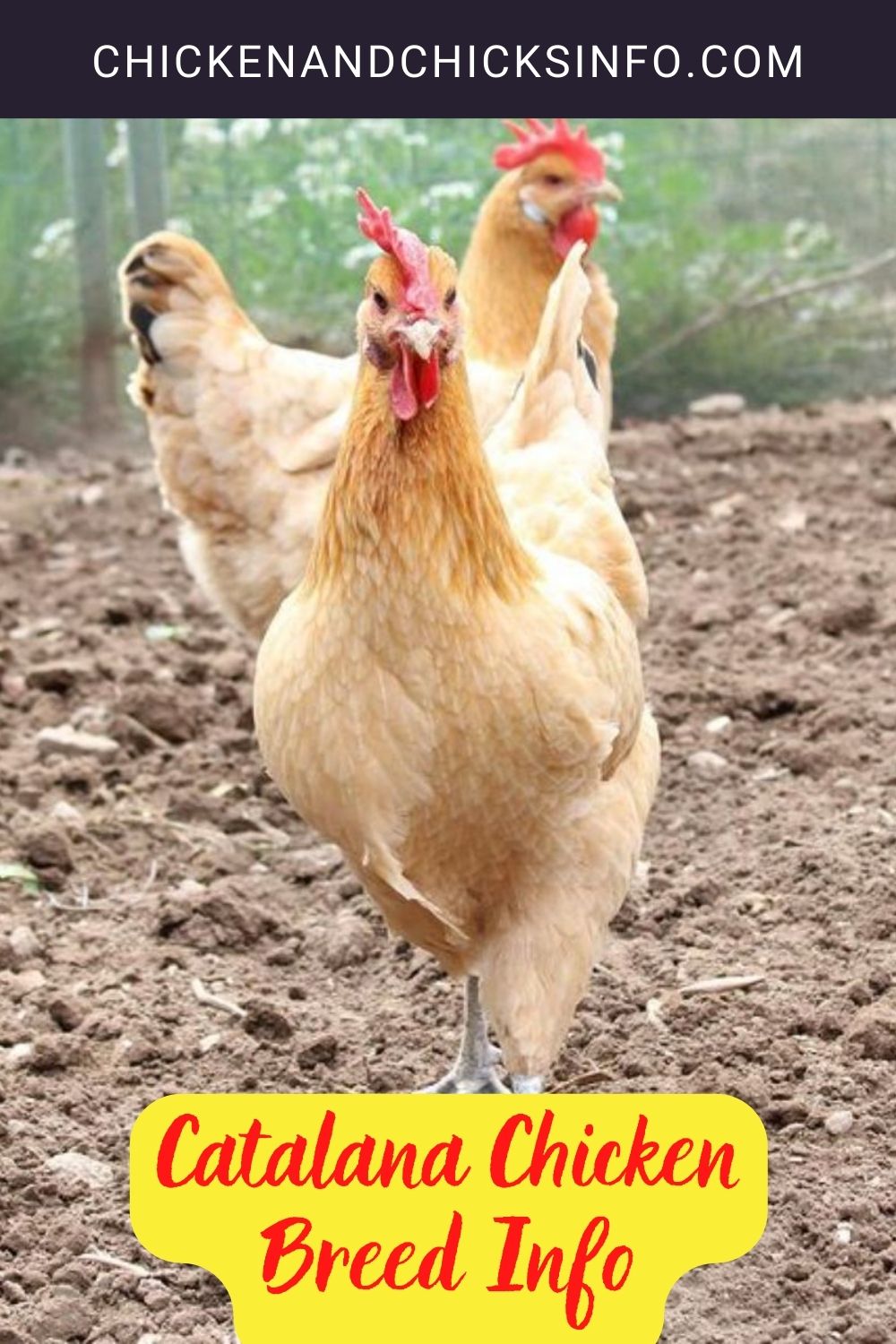If you're looking for a chicken that is a good egg layer and forager, the Catalana chicken breed might be for you. It's a rare breed that originated in Spain but has since spread around the world.
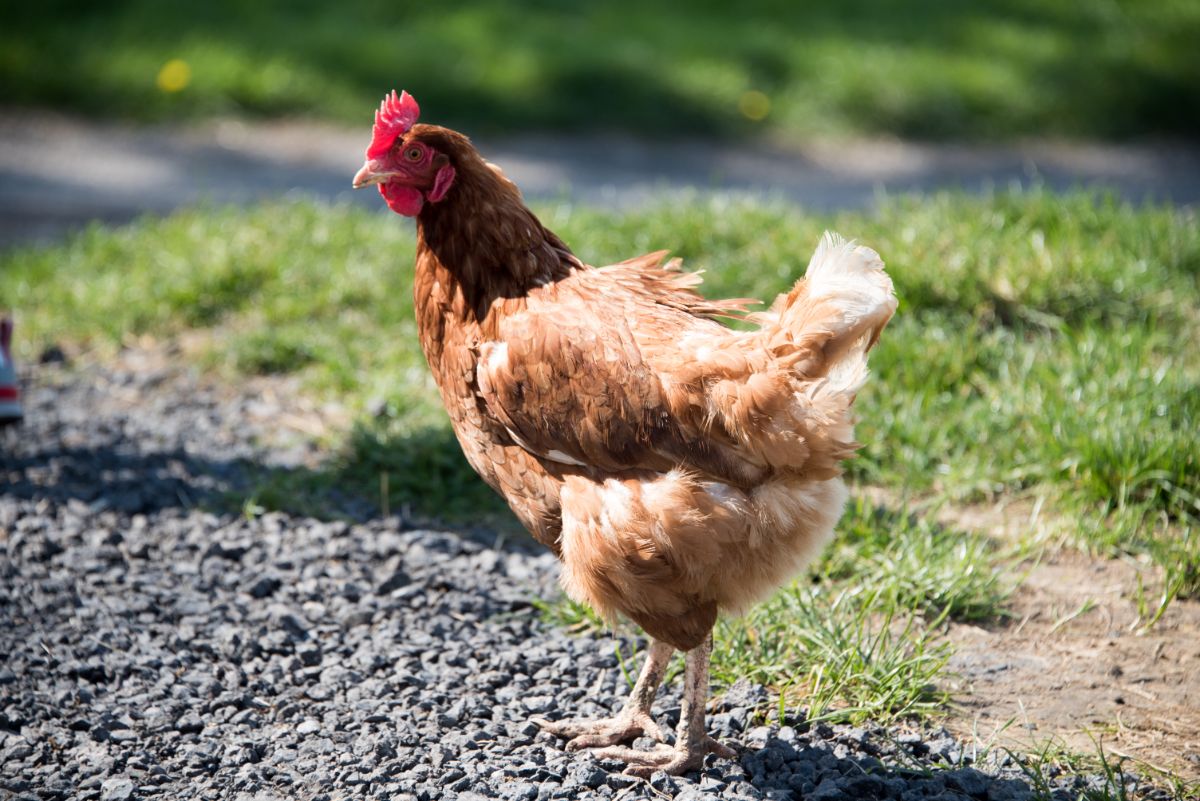
The Catalana chicken is known for being a great egg layer. Catalana hens will produce large white eggs throughout the year, which are ideal for hatching and incubating chicks or for use in cooking and baking. They are great mothers and can be taught to raise chicks from other breeds as well as their own.
The Catalana is a dual-purpose breed that is noted for having high-quality meat.
These chickens are known for their hardiness and their ability to produce great quantities of eggs each year. Here are some other things you should know about this noble bird:
Jump to:

Catalana Chicken Breed Quick Info
Catalana Chicken Description
| Catalana Type/Size: | Standard |
| Feather Color: | Buff or white |
| Leg Type: | Clean |
| Leg Color: | Slate/Blue |
| Skin Color: | White |
| Catalana Ease of Raising/Keeping: | Easy |
| Catalana Special Care Needs: | No |
| Is the Catalana breed a common, rare, or protected breed of chicken? | Rare, “watch” status |
Catalana Use
| Meat | Yes |
| Eggs | Yes |
| Dual Purpose | Yes |
| Catalana Temperament: | Alert, active |
| Catalana Ability/Likelihood to Free Range: | Yes |
Catalana Egg Production
| Egg Color | White/Light Pink |
| Egg Size | Medium |
| Estimated Number of Eggs Per Year | 200-240 |
| Likeliness to Brood Eggs/Raise Chicks | Low |
Catalana Meat Production
| Dressed Weight Male | 6.5 lbs. |
| Dressed Weight Female | 5 lbs. |
Catalana Climate Tolerance
| Heat | Excellent |
| Cold | Moderate |
Catalana Age to Maturity
| Number of Months to Reach Full Size | 5 Months |
| Number of Months to Start Egg Laying | 5 Months |
| Number of Weeks/Months to Reach Meat Harvest Size | 5 months |
Catalana Size at Maturity
| Male | 8 lbs. |
| Female | 6 lbs. |
Origins of the Catalana Chicken
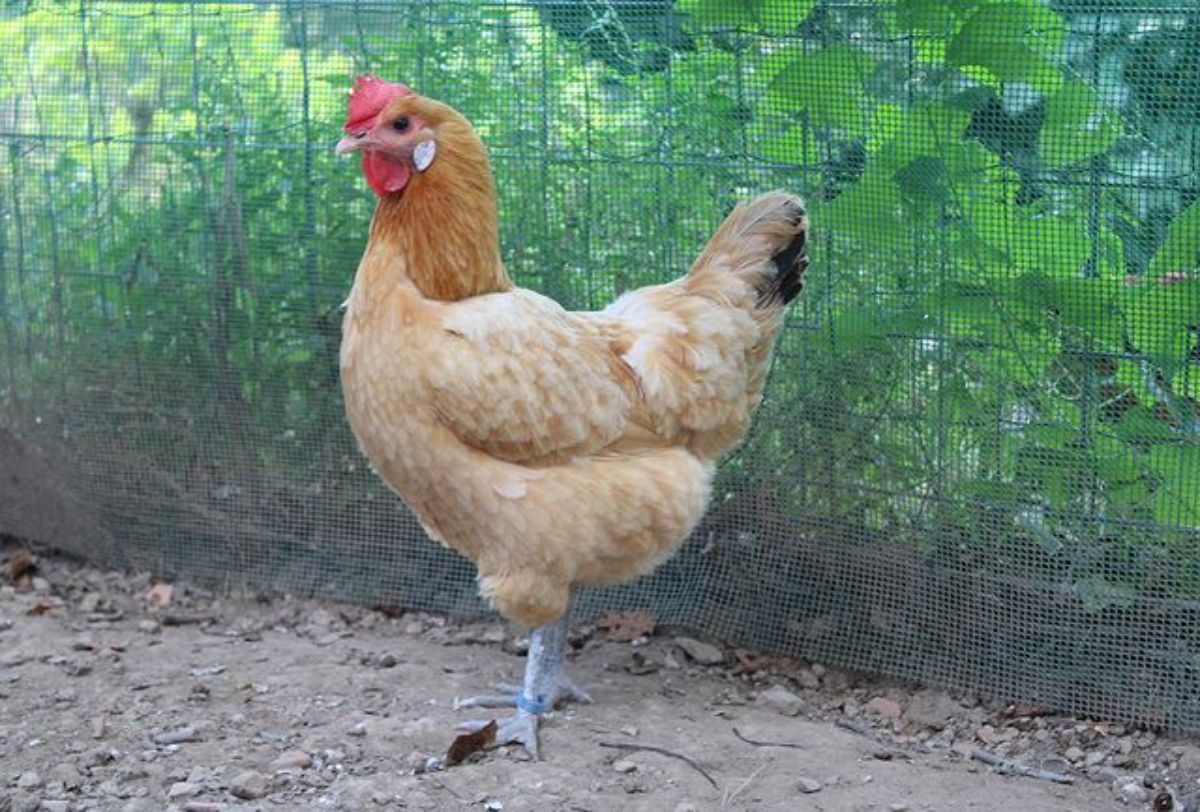
The Catalana chicken breed is a rare breed that originated in Catalonia, Spain. This breed was developed over many years by crossing Spanish landrace chickens with Asian breeds during the nineteenth century.
In 1902, the Catalana chicken was introduced to the world at the World’s Fair in Madrid, Spain. In 1949, it became a recognized breed in the United States but remained small in number throughout the country.
Today, it is still a rare breed in the U.S. It gained popularity in Latin America, though, due to its heat tolerance. In the 1920s, the Catalana was a staple of the commercial egg industry in Argentina.
Some Things to Know About the Catalana Chicken
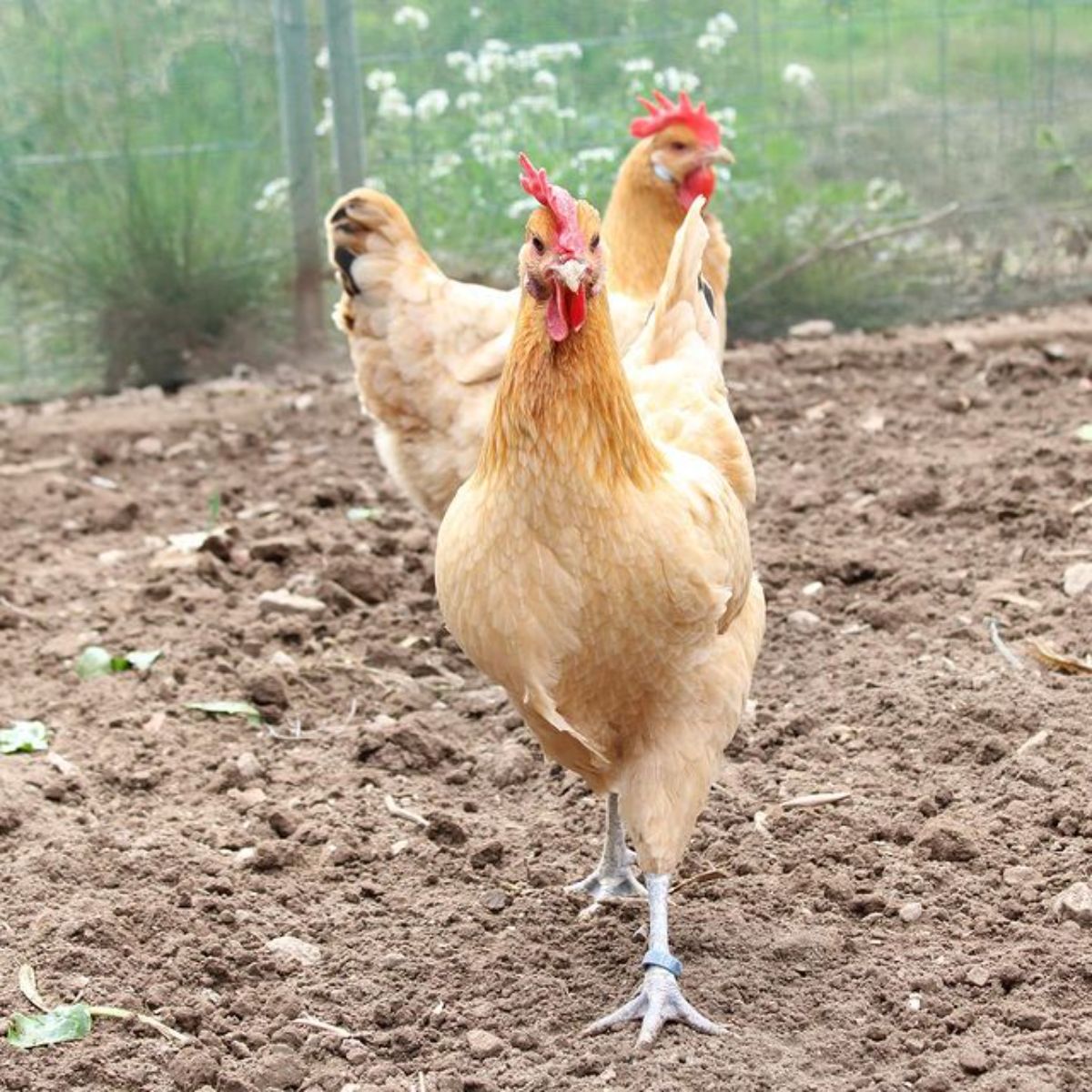
The Catalana chicken is a medium-sized breed. The color of their feathers is a buff color that can range from a light tan to a dark reddish-gold. Both hens and roosters boast black tail feathers that may be iridescent. In Spain, you can find a white variety of Catalana chickens.
Their appearance is rounded, and their beautiful plumage makes them attractive show birds. They have medium to large wattles and large single red combs, and white-colored earlobes. Their legs and feet are blue, while their skin is white.
How Easy is it to Keep Catalana Chickens?
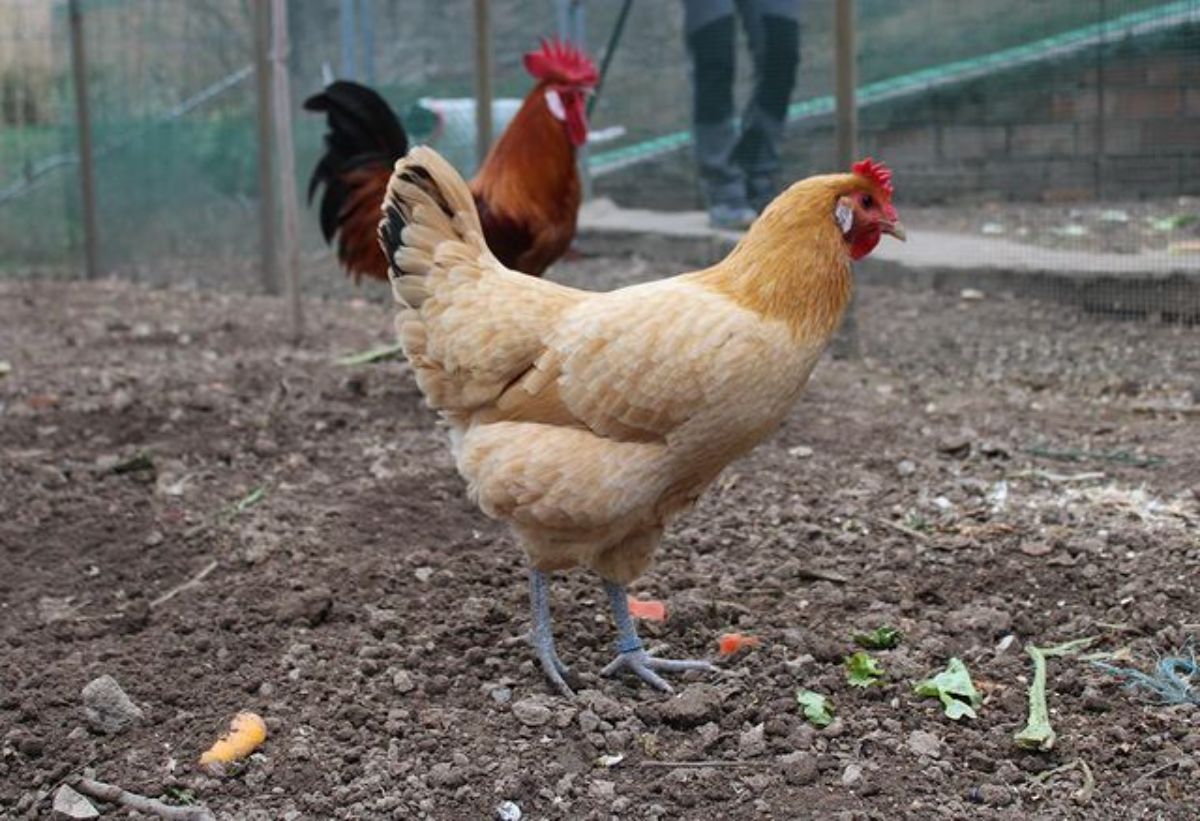
Catalana chickens are very hardy and can withstand hot weather conditions. They are not as susceptible to diseases as other breeds, making them a good choice for beginner chicken owners.
Similar to other Mediterranean chicken breeds, they are active, alert, and good free-range birds. They are known to be excellent foragers and do best out of confinement.
However, they are not the best breed to be used as a pet chicken, as they don’t enjoy being handled very much. They are also known to be flighty and will roost in high places if given the opportunity.
The Catalana chicken is easy to care for as long as you have land for them to roam and forage for food on. They are an excellent choice for small homesteaders.
Special Care and Considerations for Catalana Chickens
As with all chickens with a single comb, there is a risk of frostbite in the winter. When temperatures drop, a swipe of vaseline on their comb can help to protect it from frostbite.
The Catalana chicken breed has been around for hundreds of years, but it’s still not well known. That means that if you want to get some for your own backyard flock, you may have to do some research and work hard at finding them. But once you do—and once you start raising these beautiful birds for eggs or meat—you’ll never look back!
